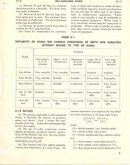Tigerman
Contributor
Oxtox is no issue till youre over 56m below the surface (184ft). Oxtox REALLY is the LEAST of your concerns "going below 130". Theres a LOT of ocean between 130ft and 184ft.I would suggest you all pull your old dive books out and understand WHY there are issues below the 130 foot range.
For starters, look at gas laws. Oxygen toxicity starts to become an issue, as well as narcosis. That is why tech divers use inert gasses in their mix.
You all should take a Nitrox course, which will go into partial pressures in more depth, and discuss the above items.
It is a bit frightening that people on here think their fancy computer is going to solve the problem for them, without understanding gas laws and impact on the body. These are the same type of people that will penetrate a wreck, just because they purchased a $30 reel spool.
An OW card is a beginning level card. I tell folks it's realistically good to about 60 feet. Any deeper than that, and you really should get more training (deep diving class, for starters). Gear issues come into play, too, the deeper you go.
Tread carefully, and don't think reading stuff online qualifies you to endanger you and your dive buddy.
Narcosis, air consumption and the fact that you cant do a direct ascend if something happens is MUCH more relevant issues IMO.
Also, if you ARE diving some other gas than air, you know to mitigate the oxtox issue to begin with - unless youre doing that as well without any training that is..





